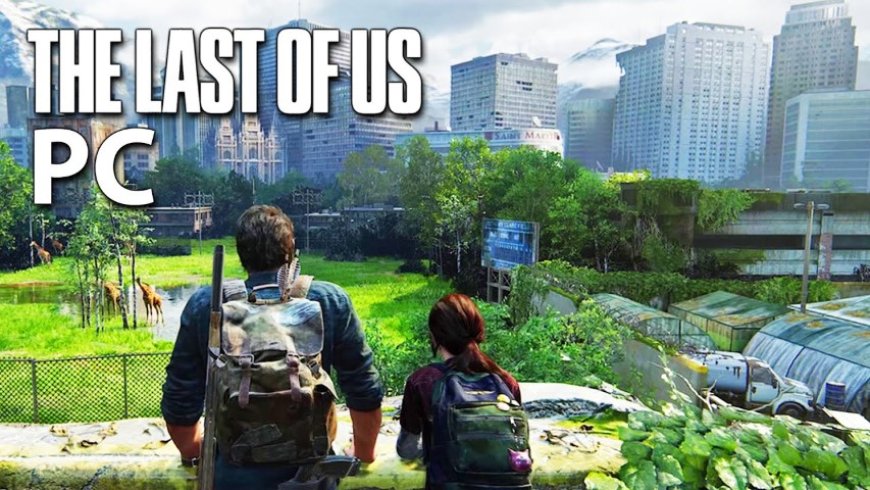Last of Us Part 1 (PC), Worth to Buy?
We now have our hands on the PC release of The Last of Us Part One, a port of the PS5 release in 2022. Having played the original game multiple times, we were curious to see how the game holds up on PC.

First of all, as we noted in our review of the PS5 release, The Last of Us Part 1 Remake is an incredibly faithful one, with no significant changes to the original's hybrid stealth action-adventure gameplay. The focus was instead on updating the visuals and presentation to modern standards. While the PS5 release was a great new way to play the game, the PC version is unfortunately the worst version of the game by far.
Playing the game on a Windows 11 PC running an 6 Core Processor, 32 gigabytes of RAM, and Nvidia RTX 3060 TI, with the game installed on SSD. These specs are well within the range of the recommended specs on The Last of Us Part 1 steam page. With these things in mind, we don't think there's much of an excuse for The Last of Us Part One to run as poorly as it does. The first time we started the game, it featured slightly longer load times and lower frame rates on the game's main menu. This was likely because the title was caching its shaders in the background and getting us ready for a smoother experience. However, the Shader caching was an arduous process that took our PC well over an hour to complete.
During gameplay, the game managed to look quite well even with DLSS or FSR running. However, various effects in the environment tended to be affected by the frame rate. Even the incredibly linear opening section of the game had the frame rate dip down quite a bit, especially once things started catching fire in the game's environments. While running the game on Windows 11 was quite painful, the steam deck suffered even more stuttering issues and low frame rates, which isn't too surprising considering the limited hardware on the handheld system. Both our desktop and steam deck sessions were also interrupted quite often with crashes.
Tinkering with the game's various graphical options, of which there are quite a few, didn't really help that much. At most, it pushed our frame rate up from an average of 55 on high settings to 65 on medium. With all the performance talk out of the way, let's take some time to talk about our experience of playing The Last of Us Part One.
The sandbox-style encounters in the game can be quite fun, especially against human enemies that can be satisfying to play around with. However, the general experience is hampered by the gameplay's incredibly basic stealth mechanics that only really give you one real chance to be caught. The moment you're seen by a single enemy, just about every other enemy is going to come down on you with all the firepower they can muster.
On the other hand, we'd argue that in true Naughty Dog fashion, the story in The Last of Us Part 1 is going to be the core impetus driving you along to finishing the game. The Last of Us Part One is defined by its character arcs and interactions rather than by an overarching story. The plot is simple; protagonist Joel has been tasked with transporting Ellie, a girl seemingly immune to the cordyceps that have caused the apocalypse, across the country. Along the way, many enemies in various states of being are infected and fought, and ultimately we get to see the characters of Joel and Ellie grow together.
The plot is more of a vehicle to drive you to various points of character interactions and set pieces that ultimately end up with some sort of character growth for the duo. Along the way, you'll get plenty of environmental storytelling as you explore dilapidated buildings. The plot of the game is relatively simple: the protagonist Joel is tasked with transporting Ellie, a girl immune to the cordyceps virus, across the country. The story is driven more by character arcs and interactions than by an overarching plot, which we found to be a strength of the game.
We were impressed with the strong character writing and the unique backdrop of a zombie apocalypse. The environmental storytelling, such as exploring abandoned buildings and destroyed neighborhoods, was also well done. However, we did find that the game fell flat as a third-person shooter, as resources were not as scarce as they should have been to create tension, and improvisation with the environment was limited.
The biggest issue we encountered with The Last of Us Part One was the poor PC port. The game was badly optimized, leading to low frame rates and crashes. The initial shader caching process was also time-consuming. We compared it to other recent remakes, such as Dead Space, which had a better visual overhaul and a relatively well-optimized PC release. We hope that the developers will fix the issues with the PC port soon.







